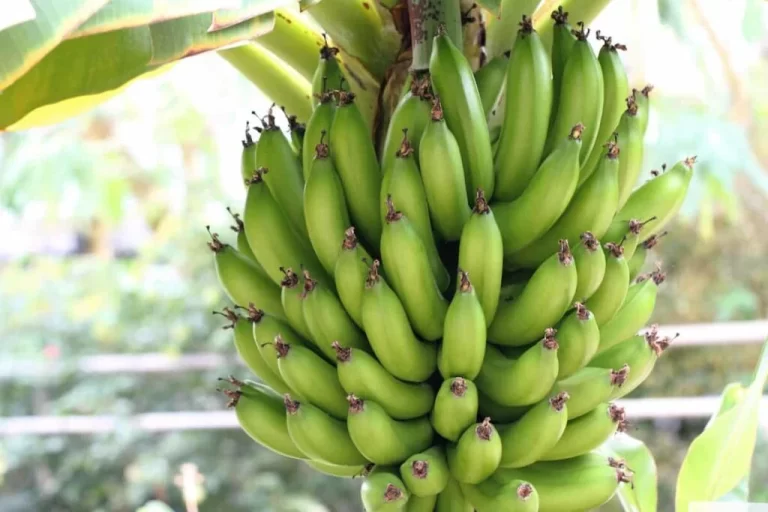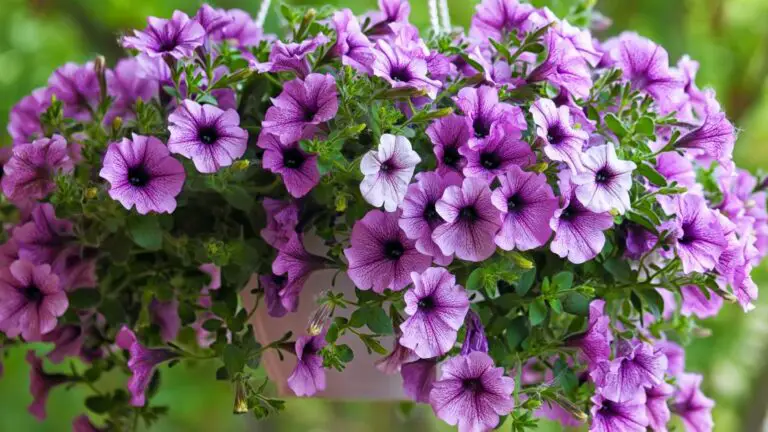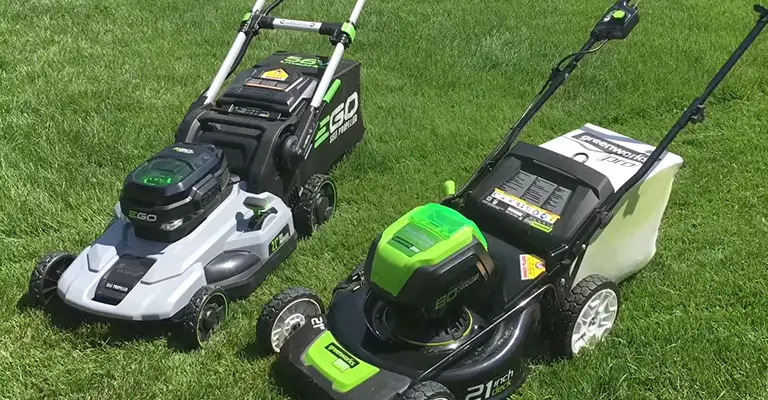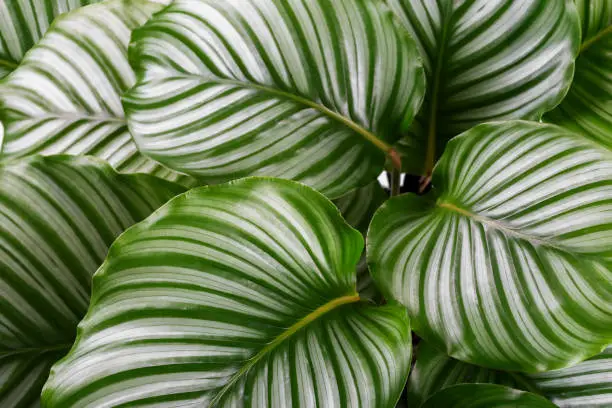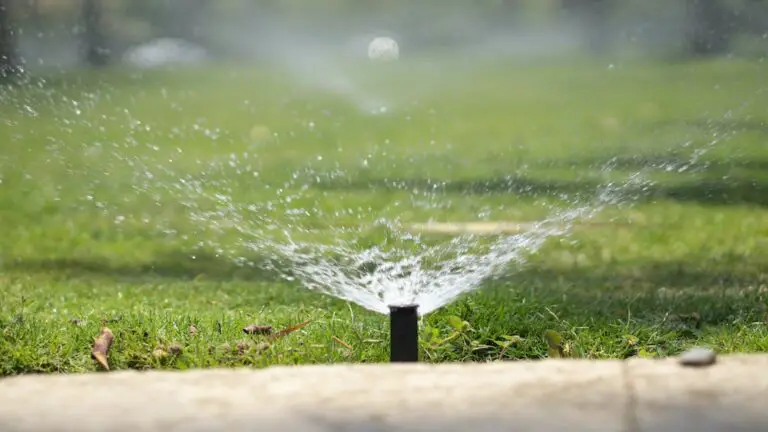How Quick Does Eggplant Develop?
Eggplant (Solanum melongena) is an easy-to-grow warm-season crop. When you have a backyard plot, a raised mattress, and even a big container, you may develop eggplant. Give these crops loads of heat, shiny daylight, and wealthy, moist, well-drained soil, and you may be nicely in your strategy to your first harvest.
There are various completely different kinds of eggplant accessible to develop that you just in all probability gained’t see in your native grocery store. If you’d like an eggplant that appears like an precise egg on a plant, attempt a rounded white selection. When you like big stuffed baked eggplant boats, attempt a big fleshy selection.
However in case you are extra interested by stirfries and sauteed veggies, I might advocate an extended slim selection. You will discover eggplants in white, inexperienced, and various purple hues.
You’ll be able to simply develop eggplants from seed or get a head begin by shopping for younger crops from a nursery or backyard heart. Probably the most tough factor about rising eggplant efficiently could also be that they’re a favourite meals of many pests. Hold a detailed eye in your crops all through the rising season and be proactive about dealing with any new issues.
When you harvest your eggplant, you may look ahead to your personal tasty home-grown dishes. Eggplant is a wonderful summer season meals to prepare dinner on a grill. You can too roast, broil, bake, or saute it. These crops love the summer season warmth and can give you loads of eggplants all through the summer season and till the primary frost.
When you’re prepared to begin rising, learn on to study extra about eggplant’s completely different progress levels and what you may anticipate throughout every stage.
9 Development Phases of Eggplant Crops
| Stage | Key Notes |
| Choosing Seeds | – Begin seeds indoors 8-9 weeks earlier than the final frost – Sow ¼-½ inch deep – Sow 2-3 seeds per pot – Hold heat and moist |
| Sowing Seeds | – First inexperienced shoot emerges above the soil – Tiny inexperienced leaflets – Seem 6-12 days after planting – Final 2-3 weeks – Hold heat and moist |
| Germination | – Seed softens and opens – Tiny root emerges – You in all probability gained’t see this stage – Seeds germinate 5-10 days after planting – Hold heat and moist |
| Cotyledons | – Seem 7-14 days after cotyledons – Final for the remainder of the flora – Wavy edges, barely tough to robust – Starting of speedy progress – Time to skinny seedlings – Time to transplant into the backyard |
| True Leaves | – Seem 7-14 days after cotyledons – Final for the remainder of the flora – Wavy edges, barely tough to robust – Starting of speedy progress – Time to skinny seedlings – Time to transplant into backyard |
| Vegetative progress | – Quick progress charge – Leaves develop bigger – Look ahead to pests and ailments – Think about companion planting – 1 to 2 inches of water per week |
| Flowering | – 60+ days after beginning seeds – Crops proceed flowering till frost – Plant maturity – Pale purple, star-shaped flowers – Flowers entice pollinators – Time to fertilize |
| Fruiting | – Fruits develop after flowering – 7-14 days from flower to reap – Fruits are thick and fleshy – Proceed common watering – Fertilize once more |
| Harvest | – 65-100 days from seed to reap – Ripe fruits are agency however with slight give – Harvest at peak – Previous fruits are bitter with robust seeds – Lower stems to reap fruits – Take pleasure in cooking with eggplant! |
It might take wherever from 65 to 100 days to develop an eggplant from seed to reap. When you begin your crops from seed, you may observe every stage.
When you begin with nursery-grown inventory, you may be beginning at both the “True Leaves” or “Vegetative Development” stage, relying on how mature your plant is on the time of buy.
Some varieties mature sooner than others, and crops will develop quickest underneath superb circumstances. Let’s dig in somewhat deeper and study extra about every stage.
Eggplant rising fundamentals
| Gentle | Full solar, no less than 6 or extra hours of direct daylight every day. |
| Temperature | Eggplants prefer it scorching! Perfect daytime temperatures are wherever between 65°F and 95°F. Crops are delicate to chilly and can die after a frost. |
| Soil sort | Wealthy, loamy, well-drained. |
| Soil moisture | Constant soil moisture is right. 1 to 2 inches of water per week. |
| Soil pH | 6.0 to 7.0 |
| Fertilizer | Fertilize at flowering and once more throughout fruiting. Use wealthy natural compost or vegetable gardening fertilizer. Comply with the instructions on the bundle. |
| Weed and pest management | Take away weeds out of your backyard space. Pests may be difficult to regulate. Hand-pick bigger pests. Attempt to keep away from chemical pesticides that additionally kill helpful bugs. |
Choosing Seeds

Earlier than you may develop an eggplant from seed, you should choose which selection you need to attempt. There are an assortment of distinctive eggplant varieties, and all can have the identical primary rising necessities and levels of progress.
When you like making and consuming stuffed eggplant, attempt one of many giant meaty varieties. When you desire to slice and fry your eggplants, attempt an extended skinny, Asian selection. If you’d like one thing distinctive and completely different, attempt an oval-shaped white eggplant that appears just like the plant is rising eggs – reputed to be the origin of the plant’s frequent title! There are many enjoyable varieties in shades of white, inexperienced, and purple, lengthy and skinny, broad and plump, or small and rounded.
Eggplant seeds are pale brown in coloration, small, flat, and spherical. They need to stay viable for 4 to six years if saved in a cool, dry place. Seed viability will lower over time, however you may nonetheless develop a plant so long as the seeds sprout. In case your seeds are previous, moldy, or musty smelling, you’re in all probability higher off shopping for recent seeds.
Sowing Seeds

Upon getting your seeds, you will want to plant them. You’ll in all probability discover it best to begin seeds indoors as a result of you should have probably the most management over temperature and soil moisture.
Eggplants are a warm-season crop, so begin the seeds indoors 8 to 9 weeks earlier than the final common spring frost date. When you don’t need to begin your crops from seed, you may also purchase younger crops from a backyard heart to transplant straight into your backyard in any case hazard of frost has handed.
When you do begin with seeds, put together a number of small seed-starting pots with high-quality seed-starting soil. Fill the pots with soil after which sow 2 to three seeds per pot.
Push them ¼ to ½ inch deep into the soil and moisten the soil within the pots. Hold the pots heat (wherever from 65°F to 90°F) and moist whereas ready for the seeds to germinate.
Place your pots in a heat, sunny window or use a develop gentle. A seed-starting heating mat may be actually helpful to assist maintain the seeds heat and encourage germination.
If utilizing a heating mat, examine the pots steadily and water them as typically as essential to maintain the soil moist.
Germination

In favorable circumstances, eggplant seeds take 5 to 10 days to germinate. Throughout germination, the robust outer layer of the seed softens and cracks open to disclose the primary rootlet. The basis naturally grows down into the soil to anchor the seed in place.
As a result of germination all occurs underground, you gained’t see this progress stage from informal statement. The seed will sprout a tiny white root that can rapidly develop longer and shortly begin to make tiny branches, and it seeks moisture, vitamins, and anchor factors within the soil.
Hold the soil heat and moist so the roots will proceed to develop. A tiny inexperienced sprout will seem inside a couple of days of root formation and poke up by the soil floor. You’ll then transfer on to the subsequent stage, cotyledons!
Cotyledons

After the seed germinates, it’s best to have only some extra days to attend till you see the cotyledons. After planting seeds, if the circumstances are favorable, it’s best to see the cotyledons inside roughly 6 to 12 days.
The cotyledons are the primary seed leaves of a plant. They don’t look something just like the true leaves that type subsequent. Eggplant cotyledons sometimes seem as a pair of skinny, pointed leaves. Often, you will notice one with three seed leaves.
These tiny crops are very delicate throughout this section. The leaves and stems might be very tender and weak to drying out, excessive solar, or chilly.
Hold them heat and moist and examine on them steadily to make sure they don’t dry out for too lengthy. The cotyledon stage will final roughly 14 to 21 days, however earlier than they disappear, you’ll in all probability see the emergence of the primary true leaves.
True Leaves

The primary true leaves seem round 7 to 14 days after the cotyledons. The higher the circumstances, the sooner the plant will develop. And as soon as the true leaves type, you’ll discover your plant grows sooner. At this level, it has already put within the power wanted to sprout and begin its new life, and now all of the power is invested in progress.
The true leaves of an eggplant are considerably oval-shaped with steadily tapering suggestions. The primary couple of true leaves might be comparatively small however will begin rising bigger. The bigger leaves might be wavy across the edges and barely fuzzy or tough to the contact.
When your plant has grown a few true leaves, it’s time to do some thinning. When you have multiple plant rising in a pot, take away all however the healthiest-looking seedling.
Use sharp scissors to snip the stems of the crops you might be eradicating. When you pull them out by the roots, you’ll possible disturb the roots of the plant you are attempting to domesticate.
Transplanting Younger Crops

When crops are round 5 inches tall, and all hazard of frost has handed, you can begin getting ready them for transplant open air. The very first thing to do is get them used to harsher outside circumstances; this course of is named hardening off.
To start, take your younger crops outdoors, the place they’ll expertise some restricted publicity to shiny daylight. Put them in a location shielded from sturdy winds and curious animals. Convey them indoors at evening if the temperature drops beneath 55°F.
Permit your crops some protected outside time day-after-day for per week, exposing them to barely extra daylight every day. After per week of hardening off, your younger crops ought to be able to transplant into the backyard.
Eggplants can simply be grown in a raised mattress, container, or conventional backyard rows. Eggplants love scorching climate, so wait till daytime temperatures are round 70°F earlier than transplanting them outdoors.
Dig a gap in your ready backyard web site with wealthy, fertile, well-drained soil, and thoroughly switch the younger plant into the outlet. Area crops about 18 inches aside to offer them loads of house to develop.
Vegetative Development

As soon as your younger crops have developed a couple of true leaves, they’ll begin speedy vegetative progress. The roots develop rapidly beneath the floor, and your plant commonly produces new leaves in preparation for flowering and fruit improvement.
The inexperienced leaves take up daylight, water, and carbon dioxide and bear photosynthesis to create oxygen and sugar power that the plant must develop.
Throughout this time, your plant will want loads of shiny daylight. Eggplants ought to be in a location with full solar, receiving no less than six or extra hours of direct daylight day by day.
Hold the soil moist as nicely. Eggplants want 1 to 2 inches of water every week. When you don’t obtain that a lot rainfall, do some supplemental watering across the base of the crops to make sure they get a very good deep drink of water. You can too apply an natural mulch round your crops to assist preserve soil moisture.
Hold a detailed look ahead to insect pests your complete time your plant is rising. Quite a few bugs eat eggplant crops, and these pests could cause quite a lot of harm. Look ahead to holes in leaves, leaves changing into skinny and “veiny” trying, wilting and leaf curling, and bugs on the crops.
Pests and ailments

Flea Beetles
- Small black beetles
- They chew quite a few small holes in leaves
- These may be significantly devastating to seedlings and younger crops
- Older crops are extra tolerant however nonetheless obtain in depth harm
- Quite common
- Tough to regulate
Potato Beetles
- Medium-sized orange, white, and black-striped beetles
- Larvae are soft-bodied, shiny orange with black spots
- Larvae and adults feed on eggplant and potato leaves
- Chew holes round edges of leaves
- Tough to regulate
- Hand-pick bugs and drop them into soapy water
Hornworms
- Giant inexperienced caterpillars
- Feed voraciously on leaves
- Frequent on tomatoes and eggplants
- Rapidly devour complete leaves and might defoliate smaller crops
- Take away by hand (they might look daunting, however these caterpillars are innocent to people)
Stinkbugs
- Giant bugs with distinguished sucking mouthparts
- Suck juices from leaves
- Broken leaves and fruits develop lifeless brown spots
- Take away by hand and drop into soapy water
Blight
- Many types of blight assault eggplants
- A fungal an infection that impacts all components of the plant
- Causes extreme wilting, blackened lifeless leaves, stems, and fruits
- Rapidly kills crops
- Don’t enable your crops to sit down in moist soil
- Rotate crops
Bacterial Wilt
- Bacterial an infection
- Causes sudden wilting and loss of life
- Leaves, stems, and fruits flip brown
- Rotate crops
- Keep away from planting eggplants, tomatoes, or potatoes in successive years
Many bugs feed on eggplant leaves, and they are often very tough to regulate. Chances are you’ll be tempted to purchase some broad-spectrum insecticide and spray your crops commonly, however do not forget that not all bugs are unhealthy.
Eggplants (and most different backyard crops!) depend on pollinators to provide fruits. Broad-spectrum herbicides will kill helpful bugs in addition to pests. When you should use a pesticide, spray sparingly and within the late night when pollinators are much less lively.
Suggestions for a Wholesome Crop
| Crop rotation | Don’t develop eggplants, tomatoes, or potatoes in the identical place two years in a row. These crops all entice most of the similar pests. Rotate them with different crops to discourage repeated infestations. |
| Soil moisture | Control soil moisture. Eggplants shouldn’t be sitting in moist soil, however they do like persistently moist soil. Water commonly so crops obtain 1 to 2 inches of water every week. |
| Be proactive | Verify your crops commonly. When you discover any indicators of sickness or illness, take applicable steps to appropriate the problem rapidly so it doesn’t worsen or unfold to close by crops. |
| Hold space clear | Clear up particles and lifeless plant matter. Insect pests and slugs like to cover out in leafy particles. |
Companion Crops

One other strategy to profit your backyard crops is to apply companion planting. Companion crops are completely different species that develop nicely collectively and profit one another in some methods. Companion crops can present assist, shade, improve soil, entice pollinators, or repel pests.
As a result of eggplants entice so many pests, attempt rising companion crops close by that assist repel pests. Some wonderful pest-deterrent crops embody marigold, oregano, and kohlrabi. You’ll be able to plant borage close by to assist entice pollinators, and you may plant beans to assist enrich the soil.
Flowering

An eggplant could begin flowering in as little as 60 days after seeding. So long as the plant stays wholesome, flowering will possible proceed till the primary frost. Flowering alerts that the plant has reached maturity and is able to produce fruits.
Eggplant flowers are pale purple and star-shaped. The flowers are self-fertile, that means {that a} single plant can produce fruits. However you’ll nearly all the time have a greater yield if the flowers are cross-pollinated with one other close by eggplant. When you begin seeing flowers, look ahead to the beginnings of the primary fruits!
Eggplants are pretty heavy feeders and can drastically profit from fertilizer purposes throughout their rising season. When your eggplant plant begins to flower, add some wealthy natural compost across the sides of the plant and thoroughly work it into the soil.
You can too use a general-purpose vegetable gardening fertilizer and observe the instructions on the bundle. Watch out to not over-fertilize, nevertheless, which can trigger the crops to develop loads of leaves, to the detriment of fruit manufacturing.
Fruiting

After your crops flower, growing totally mature fruits will take per week or two. The fruits will proceed to develop however don’t wait till they’re as giant as attainable. Fruits are probably the most tender and candy when they’re younger. Older fruits will are typically bitter with bigger, more durable seeds.
There are numerous eggplants with completely different coloured, formed, and sized fruits. Some eggplants really appear to be white eggs rising on the plant. Different white eggplants are rectangular and longer. One other number of eggplant produces fruits which are small inexperienced orbs.
Probably the most acquainted kinds of eggplant produce both thick meaty fruits or lengthy slender fruits that vary in coloration from pale lilac to deep purplish-black or a mixture of purple and white. Take pleasure in watching them develop as a result of quickly, it is going to be time to reap!
Harvest

Eggplants require wherever from 65 to 100 days from sowing seed till the primary harvest. The timing will rely in your eggplant selection and rising circumstances. Chances are you’ll have to do a little bit of guesswork to determine precisely when it’s best to harvest the fruits. When the fruits begin to appear to be the ripe ones you anticipate, it’s in all probability a very good time to reap them.
A ripe fruit will look prepared and seem in its prime. When you really feel it, the pores and skin might be easy and agency. The fruit can even really feel agency however not rock exhausting; it should have a really slight give to it.
Previous fruits will turn out to be smooth and wrinkly. Tender brown spots on the fruits can point out that they’re overripe or diseased. Inside, ripe fruit can have small, tender seeds that can almost definitely be white or off-white in coloration. An previous fruit can have bigger, darker seeds that begin to really feel exhausting.
To reap an eggplant, maintain onto the fruit with one hand and snip the stem simply above the fruit with sharp scissors or pruning shears. Don’t attempt to pull or twist to take away the fruit. This may harm the plant, and chances are you’ll find yourself pulling your complete plant from the bottom.
Now that you just’ve harvested some eggplants, what is going to you do with them? Retailer your eggplants within the crisper drawer of your fridge for 1 to 2 weeks, and plan for an eggplant feast!
Whereas a uncooked eggplant is technically edible, most individuals don’t eat them uncooked as a result of they’re fairly bitter. Eggplant tastes greatest when cooked. You’ll be able to bake it, sautee it, roast it, grill it, use it in stirfry, or bake it till smooth and mash it right into a creamy dip (“baba ganoush” is my favourite strategy to eat eggplant!).
Ultimate Ideas
If you’re a fan of eggplant, you may develop your personal. When you have a full-size backyard, a single raised mattress, and even a big container, this plant grows nicely in any sunny, moist, heat location.
Maintain your crops by watering them commonly, giving them some additional vitamin whereas they’re flowering and fruiting, and managing any pests and ailments earlier than they get uncontrolled. As soon as your crops are producing fruits, get pleasure from your home-grown produce in lots of scrumptious dishes.


